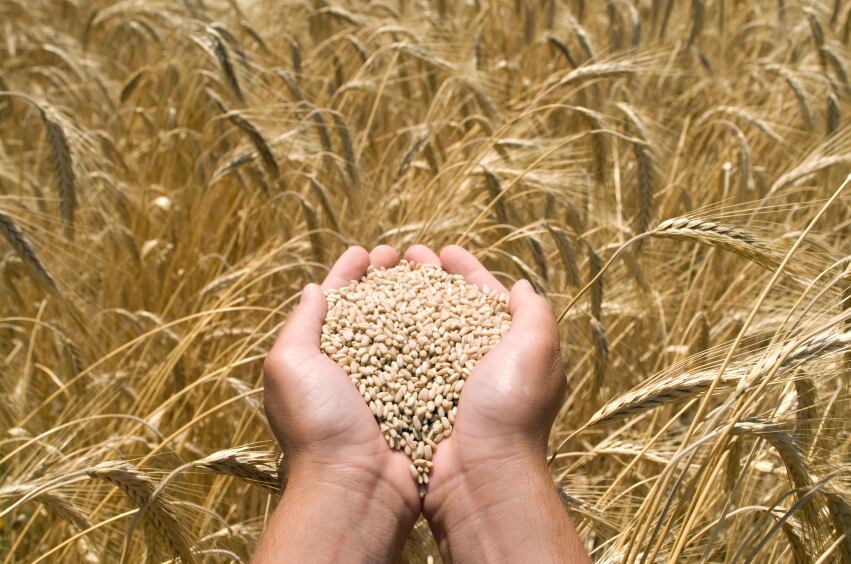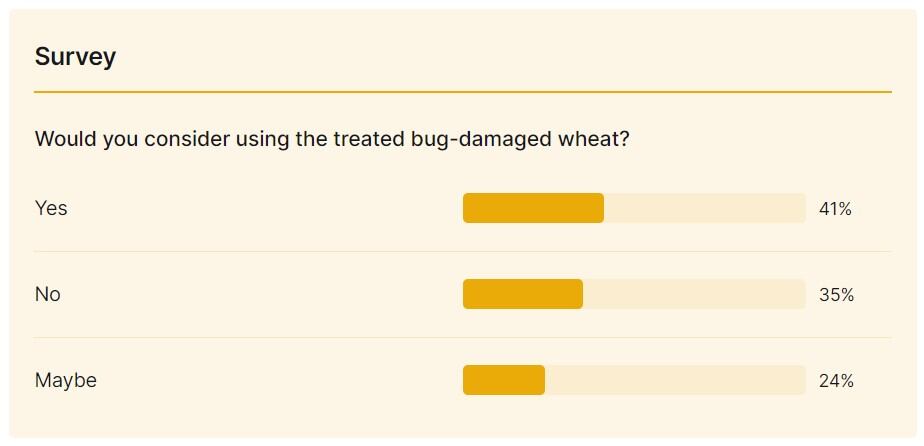Flour treatment specialist Mühlenchemie has developed EMCEbest BugStop - an enzyme blend that is the result of more than a decade of research and two year's development.
Head of research and development (R&D) at Mühlenchemie Dr Lutz Popper said the new ingredient would enable bakers to use wheat that would have traditionally been cast off for use as feed.
“There is more and more bug-damaged wheat that could be used for food consumption. There is a lot of wasted wheat,” Popper told BakeryandSnacks.com.
While the extent of this waste is unknown, he said it is likely to increase in the future given climate changes at a global level.
“Droughts are thought to increase the likeliness of bug damage to occur,” he explained.

Nutritionally perfect wheat
“Nutritionally, bug-damaged wheat is perfect. It’s the processing properties that are impaired…There is no need to reject bug-damaged wheat from a nutritional point of view,” Lutz said.
When the insects attack unripe green wheat grains, they inject a protein-degrading enzyme into the kernel which damages the gluten. This damage causes drastic volume losses in dough and poor textural properties.
However, Lutz said that only 1-3% of the kernels are affected by the bug damage. “The wheat is not completely destroyed. It still has starch, protein and nutrients. It doesn’t change the overall composition.”
“It’s not poisonous, it’s just an enzyme that is injected into the kernel by the bug,” he added.
Blend deactivates bug enzymes
The newly developed enzyme blend works to lower the pH level in the dough and deactivate the bug enzymes.
“This development is not just a small step, it’s a leap. We can now use 100% of bug-damaged wheat, compared to just 10% before we started the research,” Lutz said.
However, the researcher admitted that there are differences in volume yield and dough properties between bread made using the treated flour and ‘sound’ flour. Although, he added that it was very subtle.
“Without a reference of a sound flour, you wouldn’t notice a defect. It’s only with direct comparison… We conducted tests in Eastern Europe and all bakers were happy with the flours,” he said.
Lutz said that taste was not the issue, but that volume yields remained slightly lower and the crumb structure tended to be a little coarser.
Eastern Europe, Russia and the Middle East

Mühlenchemie is targeting Eastern Europe, Russia and the Middle East with the new enzyme blend because testing had been conducted on bug-damaged wheat from these regions.
These markets are also more likely to accept the subtle differences presented in the end product, Lutz added. “Eastern Europe and Russia are more price-sensitive and the supply situation is worse in these markets, so they have to take what they can get,” he said.
“In Western markets, people are pretty spoiled and always looking for perfect bread. Bakers in these markets probably wouldn’t like the difference they would see,” he added.

